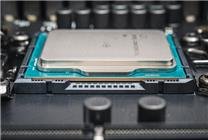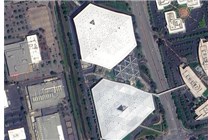### Summary
– Intel has officially unveiled its Panther Lake processor, marking the first mass-produced 2nm chip in the U.S.
– The 18A process integrates groundbreaking technologies, enhancing performance and energy efficiency.
– Intel aims for significant growth in its foundry business, with ambitious targets set for the future.
—
On October 9th, Intel announced the removal of the restrictions surrounding its Panther Lake processor, heralding a new era in semiconductor technology. This processor is the first product to utilize Intel’s pioneering 18A process, establishing Intel as the first U.S. chip manufacturer to achieve mass production at the 2nm node.
The 18A process is groundbreaking, introducing two revolutionary technologies: the RibbonFET full-surround transistor and the PowerVia back power supply. Together, these innovations not only elevate transistor performance and energy efficiency but also lay the groundwork for what Intel refers to as the “Ami Era.” This epoch is set to reshape the landscape of semiconductor design and manufacturing.
Furthermore, the 18A process, along with the forthcoming 14A process expected next year, will play a crucial role in determining the future trajectory of Intel’s central processing units (CPUs) and its foundry business. Intel’s CEO has emphasized the importance of the 14A process, underscoring that without adoption by major customers, the company might not proceed with establishing any new factories. This situation presents a pivotal moment for the company, as it faces intense competition in an increasingly crowded market.
To reclaim its status as a leader in semiconductor manufacturing, Intel is targeting substantial growth in its Intel Foundry Services (IFS). The CEO recently articulated a vision for the foundry business to expand threefold in the upcoming years, underlining the need for both advanced processing capabilities and next-level packaging solutions. This dual challenge represents a significant hurdle for Intel to overcome as it strives to reinvigorate its market position.
Adding to the competitive dynamics is the presence of other global players in the Arizona manufacturing landscape, including TSMC and NXP. Notably, Amkor, a major global packaging firm, is also enhancing its capabilities, increasing investments from $2 billion to $7 billion to support advanced packaging solutions essential for next-generation chips.
In summary, Intel’s recent advancements in the Panther Lake processor and its strategic direction in the semiconductor market present both challenges and opportunities. The company’s commitment to innovation, coupled with ambitious growth targets, positions it for a potential resurgence in the increasingly competitive high-tech industry.






